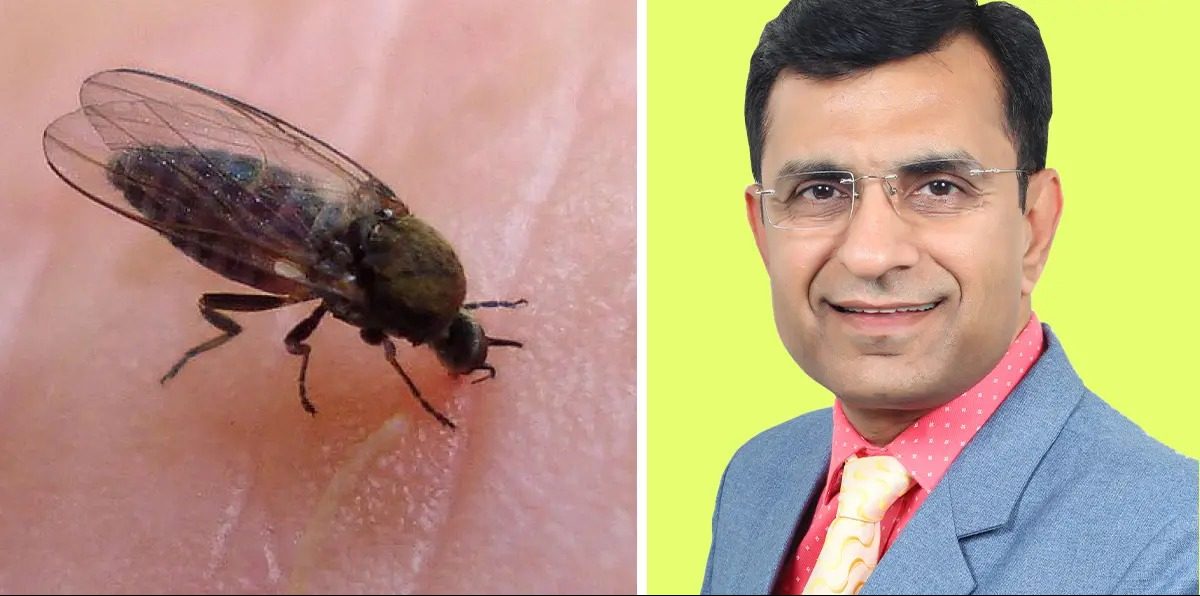
Symptoms of Chandipura Virus: In Gujarat for the last few days Chandipura virus The cases of Chandipura virus are gradually increasing. 16 children have died due to this virus. While other children are admitted in different hospitals. In such a situation, there is a lot of confusion in everyone's mind about Chandipura virus. In this regard, the Gujarati Jagran team talked to infectious disease specialist Dr. Chetan Trivedi (senior pediatrician). In which he has explained in detail how Chandipura virus occurs, how its symptoms can be identified in the beginning, how it is treated and when will this virus end.
Chandipura virus takes time to adapt
In this case, the confirmation takes time. Confirmation is done after taking a blood sample from the waist and sending it for testing. From the way the patent looks, it can be guessed that this could be Chandipura virus. Chandipura virus can affect a child between 9 months to 14 years of age at any time. In some villages, cases of this virus are coming more from those areas where there is no cleanliness, dirt and garbage. At present, these cases are coming from Panchmahal, Sambarkantha and Aravali.
In 60 percent of AES cases the virus is not detected.
In this virus, the child gets high fever and the fever can go up to 103-104. Within 24 hours of this fever, the vomit becomes thick and the fever increases rapidly. After some time, the child becomes unconscious or loses consciousness. This is called AES. Now AES (Acute Encephalitis Syndrome) can be caused by virus or non-virus. In 60 percent of cases, it will not detect the AES virus.
Litchi virus had first come to Bihar
Earlier, litchi virus had come to Bihar. This virus also causes symptoms like fever, diarrhea, vomiting, cramps and unconsciousness. So within 24 hours, the patient's liver and kidney parameters deteriorate. Liver, kidney and heart are affected. That is, if a child has high fever, diarrhea, vomiting, cramps and unconsciousness, and the child's immunity decreases after one or two rounds of diarrhea, then we have to start treatment immediately.
It has also been observed that the virus enters the body through sand flies,
But in many cases the blood sugar is low, so it is one thing or multiple things happening. So they have to be hospitalised. In the basic mechanism, the virus enters the body through the sand fly. This sand fly bites cattle before it bites humans, then when it bites humans the virus enters the body. There is no specific anti-viral available for this virus.
When the virus reaches the brain, inflammation occurs.
The virus goes directly to the brain. When there is an infection in the brain, like if we have a tumor, the white cells reach there to control the infection. When the virus reaches the brain, inflammation occurs. Once the inflammation occurs, you start feeling faint and cramps. So what you have to do is control sugar, take medicine for inflammation and complete the treatment.
Children who are malnourished or have a low immune system
But the Chandipura virus has a greater effect, nothing happens. Children who are malnourished, or who have some disease or whose immunity is weak, are more susceptible to the virus. By the time the report comes within 72 hours of sending the report, the child often dies. After extracting blood and water called CSF from the waist, we send it to Pune. Now the report comes within seven days that either the child has recovered or he has died.
Chandipura virus will be tested in Gujarat.
Chandipura virus will be tested in the lab here. You have to send it through the government or you have to tell the lab person and send it to Pune. Because there were no other reports. The chances of cases coming from the CT area are low. This virus comes every year, there are very few cases so we leave it saying that it is a virus.
As soon as the sand fly era ends, Chandipura virus will also end.
In 2010, there was a huge number of cases in Anand Kheda. So this happens every two-four years, when it is detected, it comes in the media. The breeding season of sand flies is during the monsoon, so after the season is over, the severity and number of the disease may reduce.
Specially follow this for kids,
You should be careful that there is no sand fly. Dirt should not be filled and if there are cracks in the building then they should be filled. Secondly, it will not bite us. Do not let the child go to a dirty place. We can prevent mosquito bite by wearing dry clothes and using mosquito net and thirdly or if it happens then we take it to the doctor, there is less chance of it in older children because it happens only to children. We should spread the message of this virus to the villagers, there is no need to panic.
 look news india
look news india